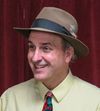Wheelmen’s Panhandle Palace
The 1890s rise and quick fall of the Velodrome bicycling track next to Golden Gate Park.
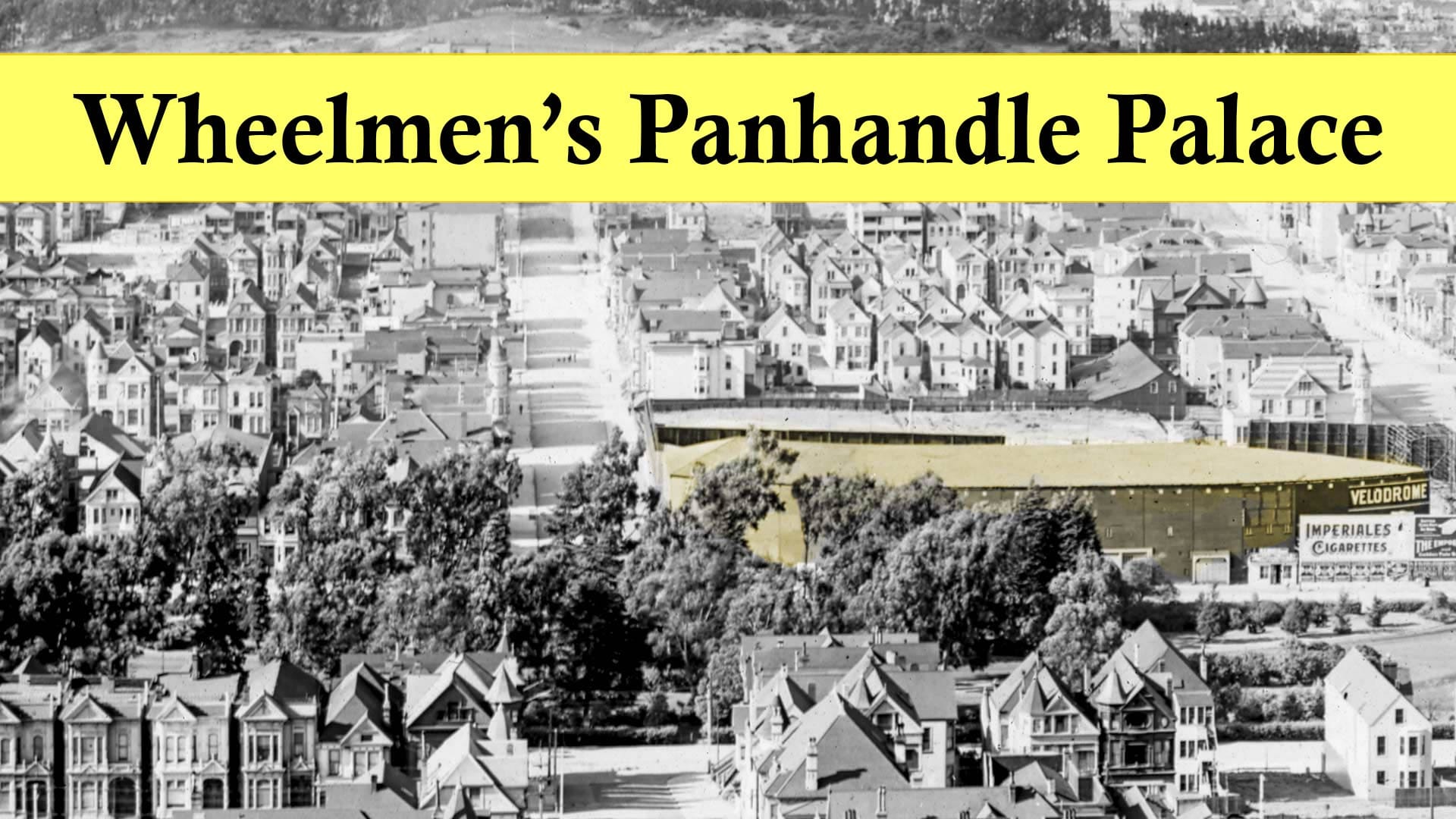
Below is perhaps my favorite historical photograph of San Francisco, a stunning 1902 panorama looking north from Buena Vista Park. I can pour over the now-anachronistic details which tell the story of a city moving west. There are cemeteries, cable cars on Haight Street, open sandy lots, and the trees of the Golden Gate Park panhandle still maturing.

And there is a mysterious larger structure at the tip of the panhandle which begs for explanation, one looking like a large ashtray at the northwest corner of Baker and Fell streets.
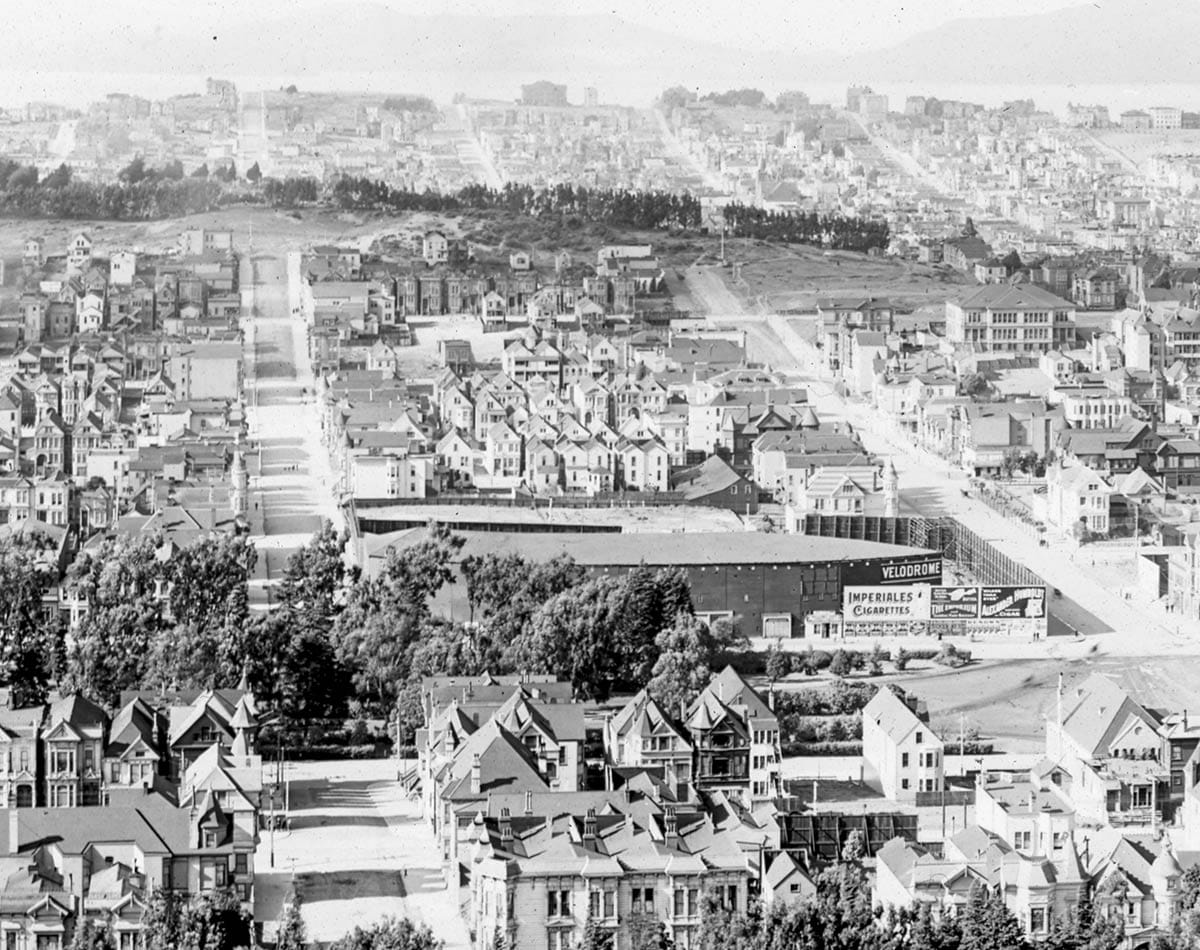
This was the Velodrome, home of a bicycle track made for racing.
The mid 1890s saw an explosion of interest in bicycling and an attendant boom of businesses trying to profit from all the “wheelmen” (and wheelwomen) headed west to ride in Golden Gate Park.
The Velodrome represented the tide’s high-water mark, a bet that people would pay to see the best racers in a biking palace with a banked track.
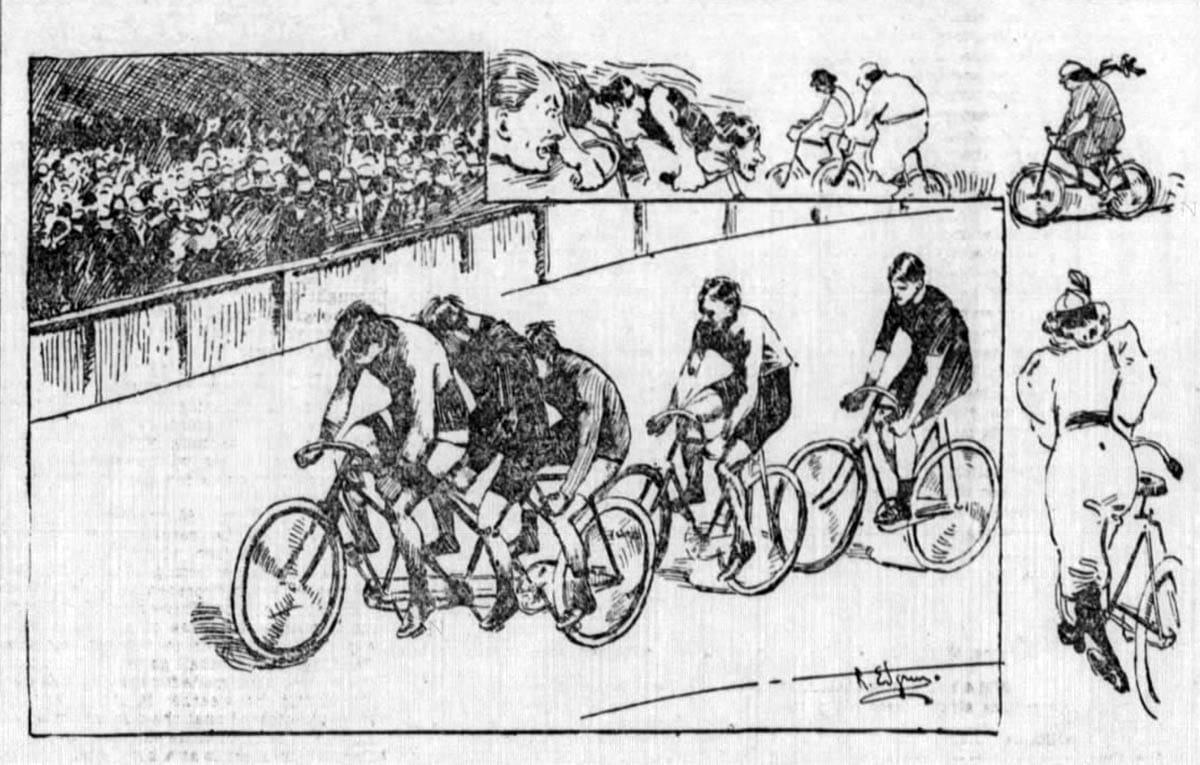
In 1896, Velodrome backers signed a seven-year lease for the block with an option for a seven-year renewal. Ambitious plans were announced.
The new facility was going to be “one of the largest edifices in the world,” a “colossal home of amusement,” ready to accommodate (in addition to bicycle races), horse shows, indoor football, tennis, handball, track athletics, and “what not.”
Walls would be thirty feet high. A glass-and-iron roof would be cantilevered so there would be no view-blocking columns for the crowds. Capacity would be 21,000 seats. Premiere architect Willis Polk was reportedly interested in doing the design. It would rival New York City’s Madison Square Garden.
There are only two indoor velodromes in the entire United States today, one in Carson, California, where the Olympic racing team trains, and another in an inflatable dome in Detroit, Michigan. Here’s what they look like:
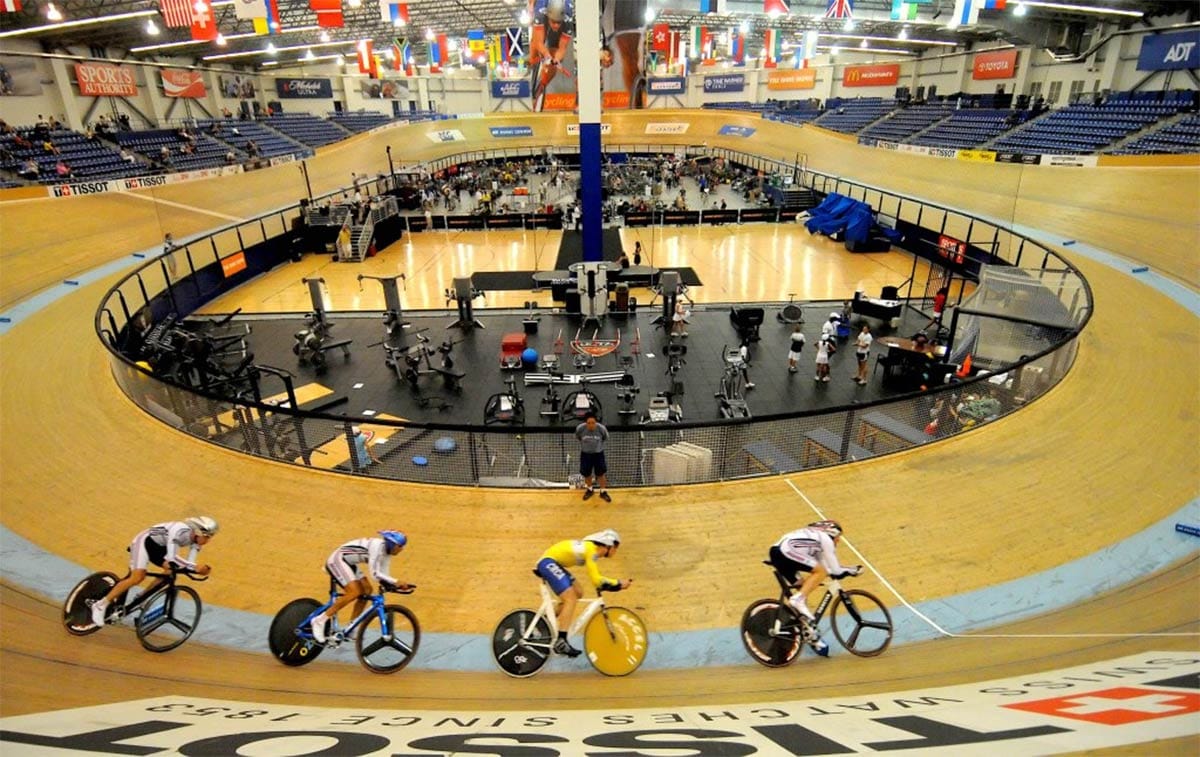
Back to the 1896 hype... All the wheelmen bike clubs would have lockers and meeting rooms. There would be salt-water baths. Stalls for 1,100 horses would be inside with a riding academy operating in the center of the proposed six-lane track.
There’d be a tennis court, handball court, stage, a café… aw heck, maybe some water rides too? We’ll see…
Oh, and it would also open in three months.
And something did get built. A look at an 1899 Sanborn fire insurance map shows us that what in the panorama looked like a bowl-shaped arena wasn’t a full building, but a just a banana-shaped grandstand of covered bleachers:
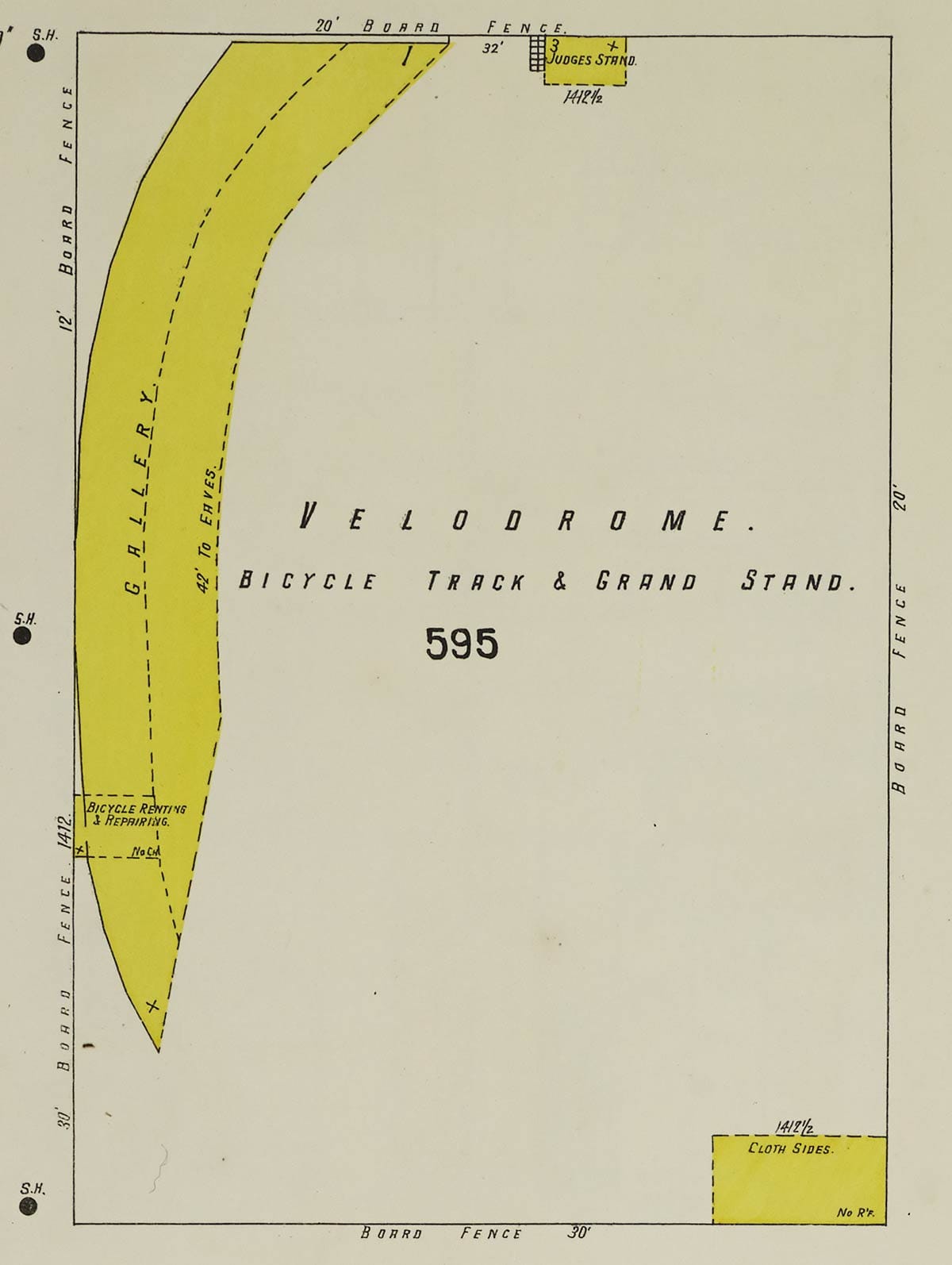
The velodrome opened on November 21, 1896. I have yet to find any other photographic documentation of it or of any bicycle races within. There turns out to be a good reason: there were not very many held.
Money was a problem from the start, as shown by the scaled-down grandstand-and-open-air-track plan. After three or four big meets, including one on New Year’s Day of 1897 which drew 3,000 spectators, the novelty wore off and it became difficult to get paying customers.
Just a few months into operation some of the Velodrome stockholders went rogue and tried to host a big indoor meet at the Civic Center’s Mechanics’ Pavilion. This sparked lawsuit threats and a split in the cycling community. Lots of wheelmen didn’t like the Velodrome manager, Walter B. Fawcett.
Instead of horsey meets and tennis matches, the Velodrome settled for trying things like “Push ball” when a good bicycle race couldn’t be held:
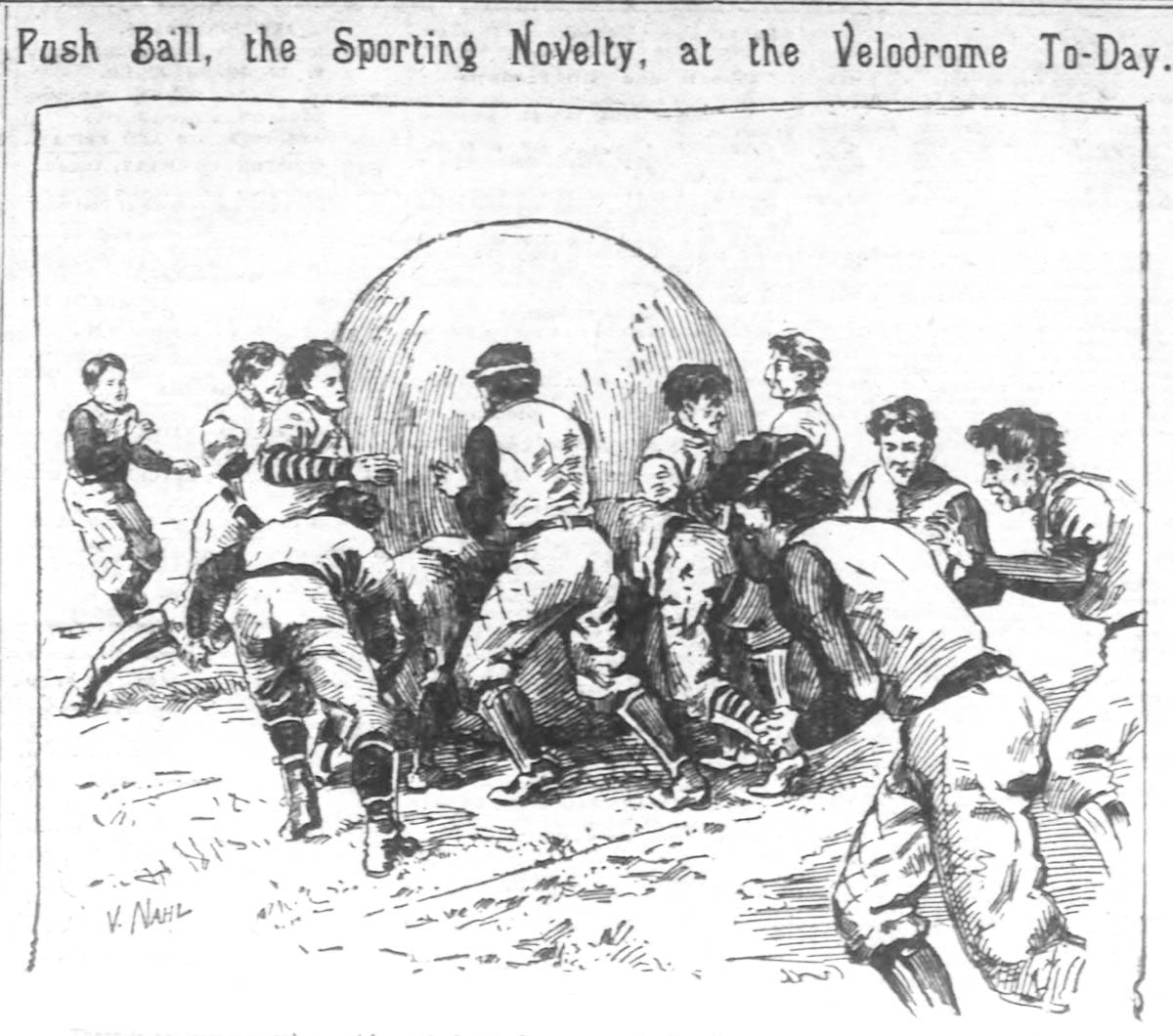
In February 1897, the Call tried to put an optimistic spin on the venue’s early difficulties: “The Velodrome is not nearly as dead as some people would like to see it.”

Manager Fawcett was put out to pasture by the Velodrome company and an announcement was made in May 1897 that races wouldn’t return until at least the fall. By September 1897, the company was negotiating to turn their white elephant into a baseball park.
The last races were held on October 3, 1897. The Examiner tried its best to give a good review of a closing day, in which several Pacific Coast cycling records were set: “The day was raw and chilly, a gusty wind blowing down the homestretch. Notwithstanding this the racing held the attention of those in attendance until the end.”
The bike track was pulled up four days later and reinstalled in East Oakland.
So, the Velodrome was a velodrome for less than a year. The Examiner noted that despite lots of hoopla about its potential, “cycle racing has been found impossible to attract the public.”
Bicycle clubs returned to the velodrome park, but only to play baseball against each other.
Other events that could make use of a field and grandstands were periodically held over the remaining term of the lease: rugby, flying-machine-model competitions, exhibitions of women playing football (“It is not expected that the girls will attempt to maim each other,” predicted the Call) .
The Velodrome park hosted a pyrotechnic recreation of the Battle of Manila on August 18, 1898, capitalizing on Spanish-American War fever. Lots of actors charging around, cannon booms, and tableau of sinking ships entertained a few thousand folks.

The Velodrome operators tried to lure boxers Jim Jeffries and Tom Sharkey to the site for their heavyweight championship fight in 1899. A Call artist did a sketch of the state of Velodrome for the article and made sure to highlight the weedy infield.

The lease finally ended. When the 1906 earthquake and fire burned down its company hospital at 14th and Mission Streets, Southern Pacific grabbed the block to build an impressive and modern replacement. The old hospital with classical façade remains today as a senior affordable housing complex.
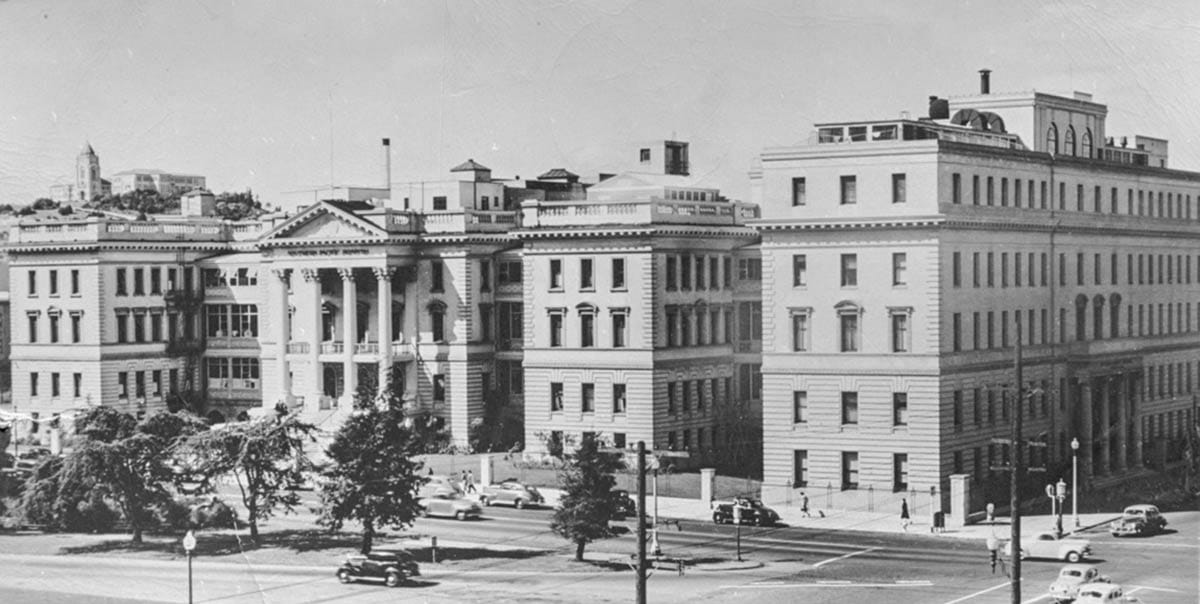
Also announced in the months after the great disaster? Plans for a magnificent recreation facility on the southeast corner of Baker and Fell streets, kitty-corner from the old Velodrome site.
Roller skating had hit one of its popular-every-20-years moments. Rinks were going up all over town. The initial sketches for the Coliseum Rink even outdid the Velodrome in frothy promise:
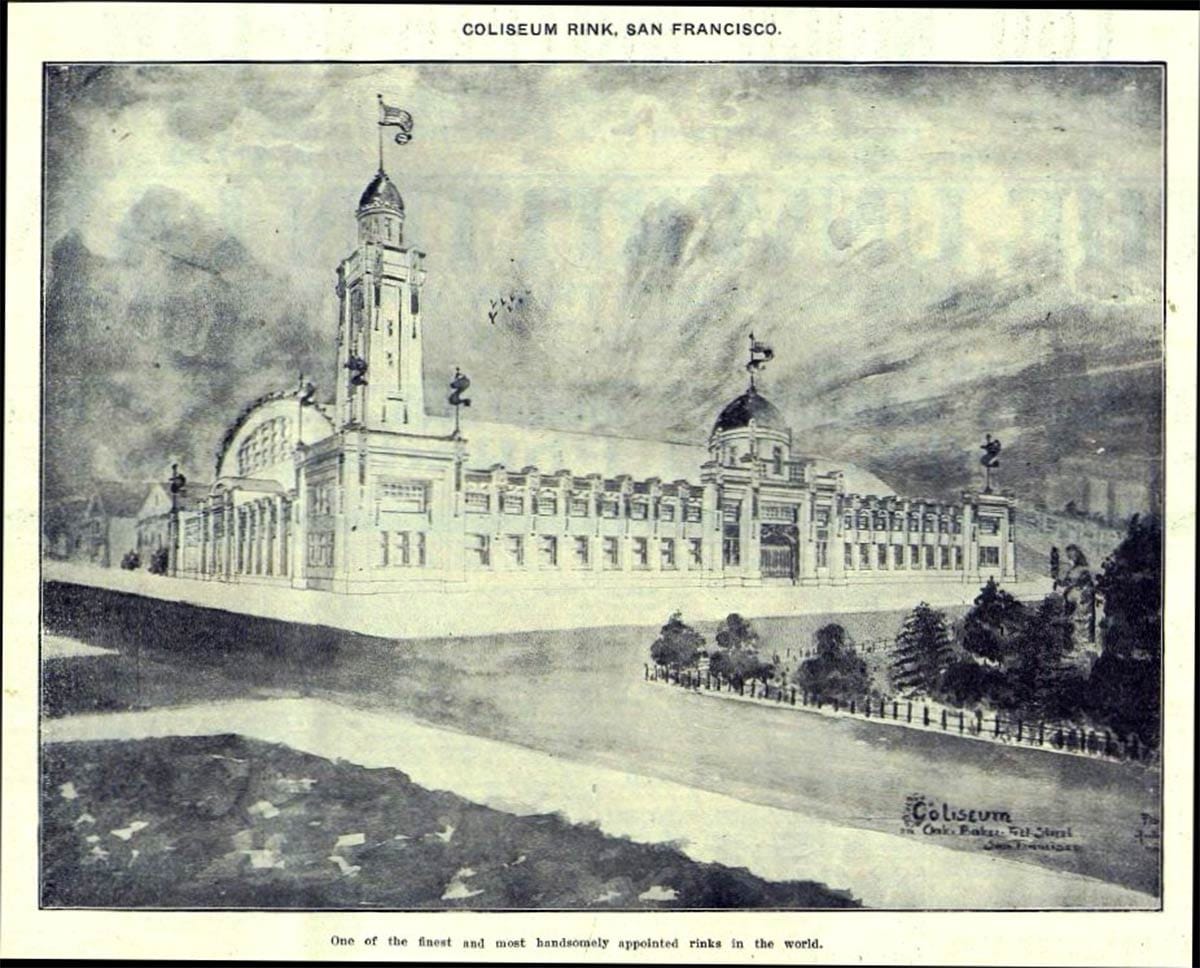
It was said that the skating palace would rival New York City’s Madison Square Garden... hmm, sounds familiar.
Something did get built. We’ll save that for a future San Francisco Story. The wheels keep turning.
Woody Beer and Coffee Fund
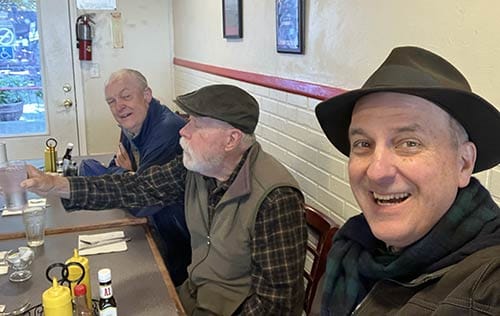
Thanks to F.O.W.s Dennis O. and Paul J., I have cash to buy you a drink.
When are you free? We can have a hot chocolate or a hot toddy. We can talk about the weather or Wittgenstein. We can share reminiscences or regrets. I am especially curious to hear about that thing you have been turning over in your mind. Oh, and remember that time you did that other thing? That was fun.
Sources
“One the Lines of the Velodrome,” San Francisco Examiner, August 2, 1896, pg. 8.
“The New Velodrome,” San Francisco Call, August 7, 1896, pg. 11.
“Athletics Under a Roof,” San Francisco Chronicle, August 30, 1896, pg. 26.
“In Sporting Fields,” San Francisco Call, November 21, 1896, pg. 8.
“Push Ball, the Sporting Novelty, at the Velodrome To-Day,” San Francisco Chronicle, Janaury 10, 1897, pg. 36.
“The Wheelmen,” San Francisco Call, February 13, 1897, pg. 8.
“They Were Not Enjoined,” San Francisco Call, March 16, 1897, pg. 10.
“The Wheelmen,” San Francisco Call, May 22, 1897, pg. 8.
“Baseball on a Basis of Freedom,” San Francisco Call, September 24, 1897, pg. 12.
“Cyclers Will Lose Their Race Path,” San Francisco Examiner, October 2, 1897, pg. 12.
“Set New Marks for Cyclers,” San Francisco Examiner, October 4, 1897, pg. 4.
“How Girls Play Football,” San Francisco Call, December 25, 1897, pg. 8.
“California, the Paradise of Sportsmen,” San Francisco Chronicle, January 2, 1898, pg. 42.
“Manila Bay’s Baptism of Fire,” San Francisco Examiner, August 19, 1898, pg. 9.
“City Sports Offer a Fortune for a Fight,” San Francisco Call, July 7, 1899, pg. 2.

